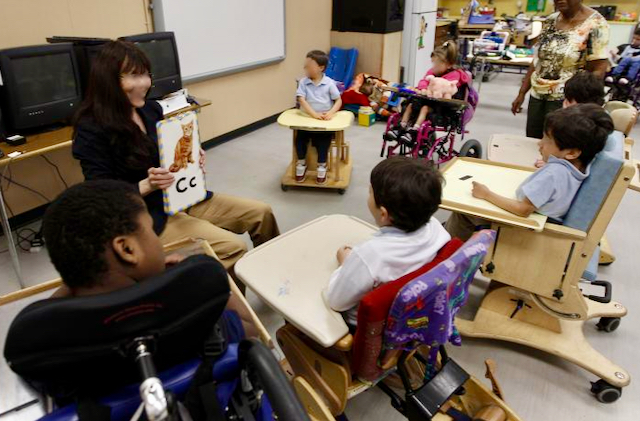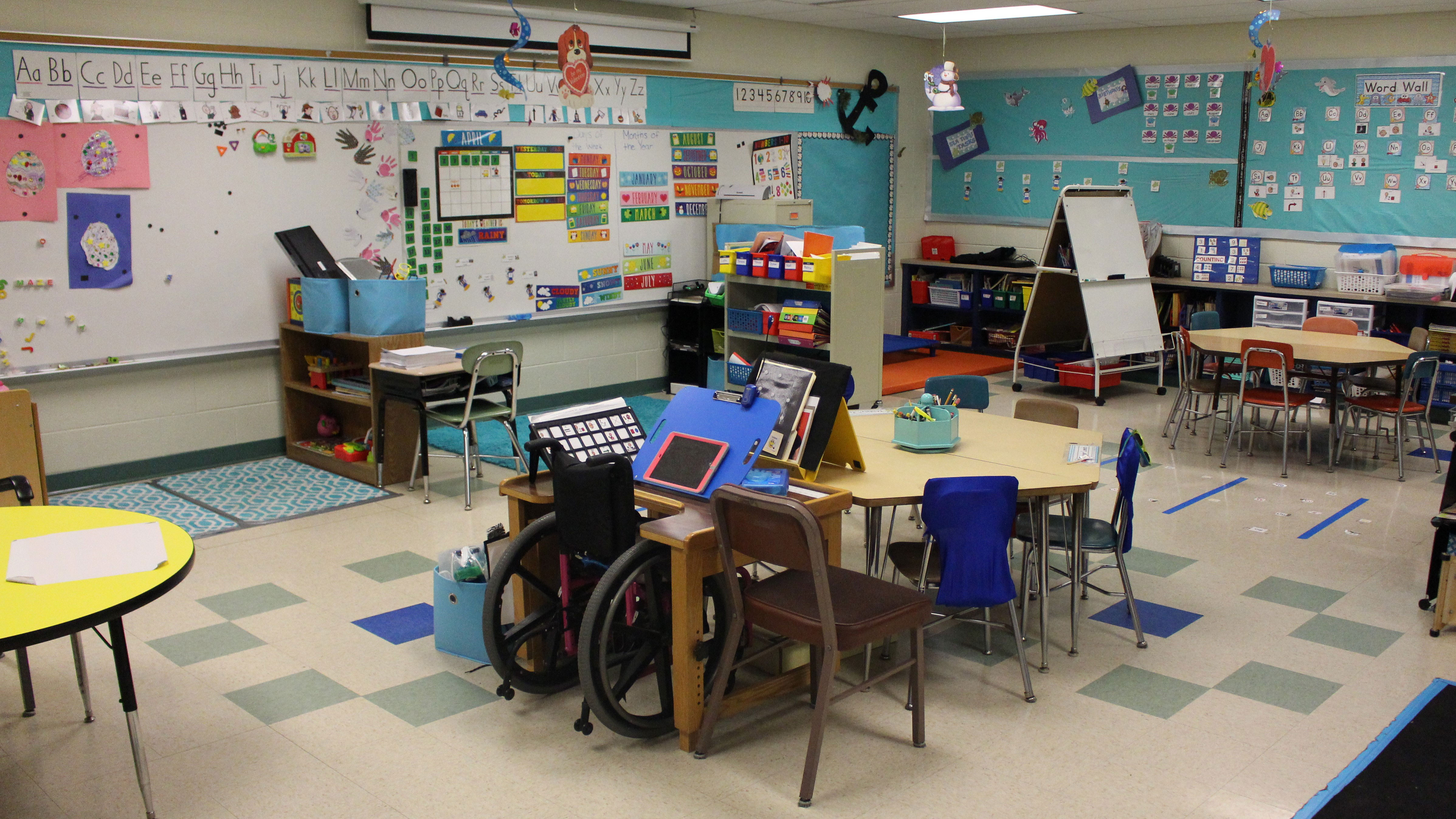Module 2: Defining Inclusion
Evolution of Membership
Exclusion
As you learned in the history module there have been significant changes in how we have supported, provided care for, and included people with disabilities. The same is true for how we have educated children with disabilities. Early practice was to completely exclude, meaning that children with disabilities were “educated” in institutions. This means that students without disabilities never encountered or even had an awareness of children with disabilities.
Reflecting on History
Prior to the Parent Movement in the mid-1950s, children with disabilities were completely excluded from any kind of educational program. Many were institutionalized. Large institutions like Woodlands in New Westminster added “School” to their name to indicate a trend toward adding skill training to the custodial care provided.
In the 1950s, people with intellectual disabilities were classified into categories based on IQ scores to describe a person's potential to learn: educable, trainable, and custodial. Classrooms were created within the institutions. People who were considered educable could be taught academic skills such as learning to read and write. Trainable meant that the person could be taught basic life skills, such as dressing and personal hygiene. A person who was categorized as custodial was considered incapable of learning.

Segregation
Educational inclusion evolved when children with disabilities were given the opportunity to attend public school. The schools they attended were separate from where their peers attended school, this was called segregation. Some of us are old enough to remember both institutional schools and segregated schools. Segregated schools offered the opportunity for children with disabilities to be considered students. Interactions between children with and without disabilities were still rare.
Reflecting on History
“Growing up in Toronto in the mid to late 60s, there never were any students with visible disabilities in the schools I attended. There was a boy who used a wheelchair who lived across the street and several houses down the road. I only ever saw him from a distance. I think he was about the same age as I was. Every weekday morning, a small school bus would come to his house and take him away. I never saw him arrive home in the afternoon. I never even knew his name.”
“My mum worked as a teaching assistant at a segregated school. The school was called Happy Valley School and initially was not located on any other school property. I remember when they built the new school, it shared the property with an elementary school. It was considered a big deal that it was part of the same grounds.”
“My first teaching assignment was at a segregated school. Students with intellectual disabilities were bussed to a small school located in a rural area of the district. Several classes organized by age and “level of functioning” made up the school population. My class was for students with multiple disabilities and complex needs. Over several years, classes moved out and formed segregated classes in mainstream schools. The process was referred to as Progressive Inclusion. The most capable students moved first and eventually my class was the only one left at the school.”

Mainstreaming
The next step in educational inclusion was to move away from segregated schools and have students with disabilities be a part of the same school as their peers, but in separate classrooms. This was referred to as mainstreaming and as the term suggests it means to belong with or to be brought into the normal or conventional. Though mainstreaming in education stopped short of full belonging, awareness and interactions were now possible because the larger environment was a shared space.
Reflecting on History
“When I started high school, mainstreaming was in full practice. Students with disabilities who previously had attended a segregated school (where my mum was a TA) were now attending the same school I was. Though I was familiar with the students because of my mum’s work, I never saw or had the opportunity to interact with them at school. They attended the same school, but were in pre-employment classrooms, which were separate. Students with disabilities were the only ones who attended pre-employment classes.”

Integration
Advocates for inclusion continued with their efforts to create school environments that provided fuller membership for students with disabilities. Same school membership was not sufficient, so integration was initiated to have students with disabilities gain access into general classrooms with their peers. This finally meant that access and interactions with peers could occur daily. However, disability specific resource rooms still existed. Students with complex needs were “pulled out” of general classrooms to receive support in the resource room.
Reflecting on History
"Earlier in my teaching career, I taught in a district program class for young students who had been designated as requiring intensive behavioural support. The class was situated in a portable next to an upper SES elementary school. When the district decided to locate the program at the school, parents protested on the basis that these students would have a negative impact on the culture of the school. The program was sited at the school despite their concerns and had been in place for nearly a decade.
When I took the teaching assignment, the portable was a self-contained classroom outside the school equipped with two time out rooms. Students in the program referred to themselves as the portable kids. They entered the main school building when escorted to use the washroom, to use the gym, and occasionally for school assemblies. Students were bussed to the program from all over the district. Arrival and departure times differed from the rest of the school to limit incidental interaction.
Early in the school year, I approached the principal and said that I wanted to move the class into the school. At the time, there were three classrooms being used for storage at the school. The principal’s first response was to make sure I knew there wouldn’t be a time out room. I told him I didn’t want a time out room. He said he would take my request to the PAC, being sensitive to the opposition to the placement of the class at the school in the first place. I will always remember and respect that the principal backed me as the program teacher and advocated on my behalf. The principal was well-respected by teachers and parents. He believed bringing these students into the school was the right thing to do. The PAC agreed on a trial basis. My wife and I emptied an unused classroom of science supplies over spring break. We moved inside and never looked back.
The next step was to approach other teachers to include program students in their classes with support. We saw our purpose as developing the strategies and supports that would help the students be successful and allow them to return to their referring schools. Opportunities for integration received teacher and administrative support.
Years later, the elementary school was destined for closure due to declining enrolment in the district. Consultation meetings were held between the district and the parents to address losing what many considered to be the hub of their community. Several parents spoke up about not wanting to lose our program from their school and the valuable lessons they and their children had learned about inclusion, and the acceptance of differences.”

Inclusion
Inclusion is the current term for including students with disabilities. In 2017/2018 the Ministry of Education and school districts changed the term Special Education to Inclusive Learning. Changes in names and terms are the first steps moving us forward to a more inclusive practice. The shift from integration to inclusion needs more than a name change. It requires a fundamental change in perspective and a definition that embodies that perspective.
Reflecting on Now
“Through our experience in Grade 6 with Inclusion Outreach (IO) and the video journalism work of Dan Habib, I was beginning to understand the vision, the meaning, and the power of inclusive education. The direct impact of IO was a very successful Grade 7 for Josh where he had been much more included in the classroom. I had a good idea of what I thought high school should look like for Josh in order for him to thrive.”